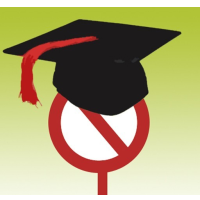San Jose Schools Overstated Graduation Success of Widely-Emulated Model

The San Jose Unified School District has been a shining example for 11 years of how setting lofty goals—and strict requirements—for high school graduation can boost student performance. The giant Los Angeles Unified School District is in the early stages of adopting a similar, though controversial, model, inspired by San Jose’s remarkable success rate.
The incredible results that San Jose reported for six years, widely cited by the model’s supporters and emulators, were wildly inaccurate and misleading. The school district quietly stopped measuring its success that way in 2008, but the reputation for achievement continued unabated in the public education arena.
On Monday, the Los Angeles Times published a report, in what amounted to a warning for other school districts, about the very ordinary experience San Jose schools have actually had with so-called “college-prep” graduation requirements. The reality is that San Jose graduates in 2000 passed 40% of college-prep classes, and 40.3% in 2011. Latino and black students did worse after 11 years.
San Jose, wracked by many of the same problems besieging other failing school districts, opted more than a decade ago for a then-novel response. It required that high school students successfully complete the 12 courses required for admittance at California universities in order to graduate.
Critics said it was harsh and would lead to more dropouts and fewer students graduating with a degree. Supporters said students would be motivated to achieve more and that the gains would be felt most acutely by underachieving minorities.
San Jose shocked even its supporters with its early success. The number of students who nailed at least a “C” in all the college-prep classes doubled. The number for Latinos, about half the students, nearly tripled.
How did they do it? Well, the school district included students who received a “D” in the college-prep classes, and reportedly used a less-demanding list of CalState University prerequisites.
It also allowed students who were stressed by the more rigorous classes to transfer to alternative schools and graduate there. The Los Angeles Times characterized the result as “ironic,” considering the program’s aim at boosting minority performance.
San Jose’s alternative programs have 50% more Latinos than the district’s traditional high schools.
–Ken Broder
To Learn More:
San Jose Unified Defends 40 Percent College-Preparation Rate (by Sharon Noguchi, San Jose Mercury News)
L.A. Unified's College-Prep Push Is Based on False Data (by Howard Blume and Sarah Butrymowicz, Los Angeles Times)
- Top Stories
- Controversies
- Where is the Money Going?
- California and the Nation
- Appointments and Resignations
- Unusual News
- Latest News
- California Forbids U.S. Immigration Agents from Pretending to be Police
- California Lawmakers Urged to Strip “Self-Dealing” Tax Board of Its Duties
- Big Oil’s Grip on California
- Santa Cruz Police See Homeland Security Betrayal in Use of Gang Roundup as Cover for Immigration Raid
- Oil Companies Face Deadline to Stop Polluting California Groundwater





